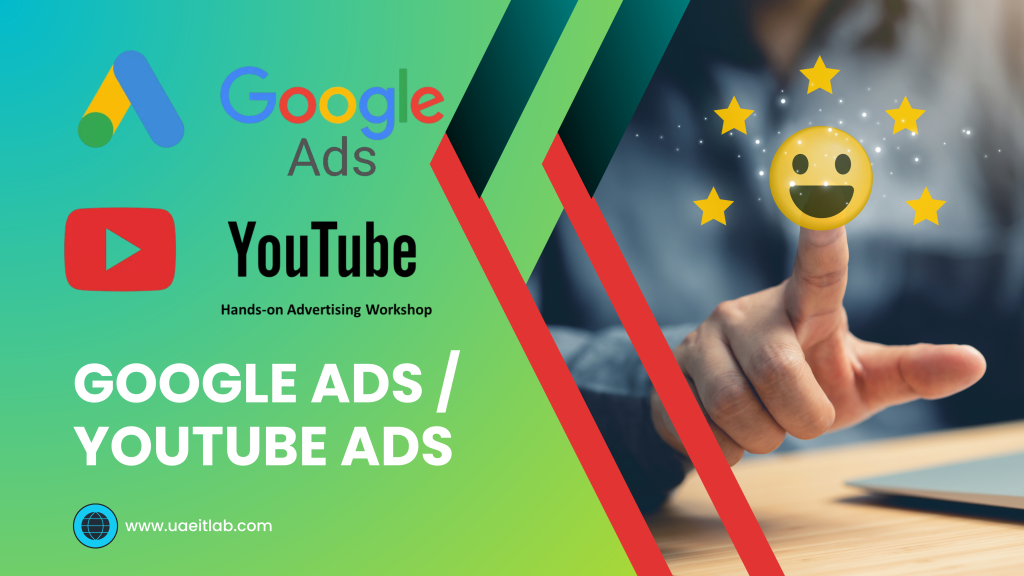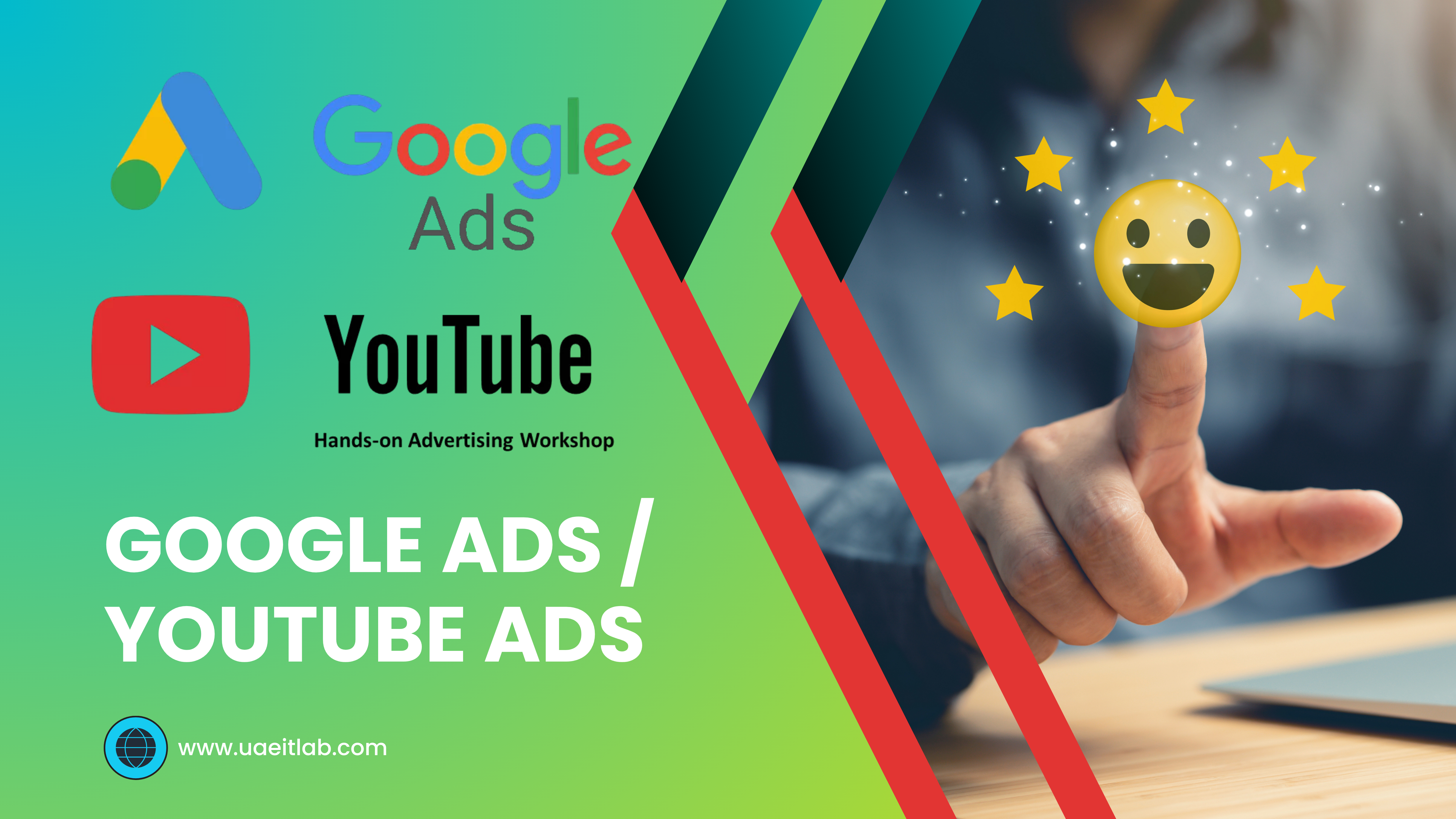Maximizing Your Reach with Google Ads and YouTube Ads: A Complete Guide

In the digital age, Google Ads and YouTube Ads have become essential tools for businesses looking to expand their online presence, drive traffic, and generate conversions. Both platforms offer powerful advertising options that can target highly specific audiences based on user behavior, interests, and demographics. In this blog post, we will delve into the benefits, strategies, and tips for using Google Ads and YouTube Ads effectively to maximize your reach and grow your business.
1. What Are Google Ads?
Google Ads (formerly known as Google AdWords) is an online advertising platform developed by Google that allows businesses to create text, display, video, and shopping ads. These ads are shown across Google’s vast network, which includes the Google search engine, partner websites, YouTube, and mobile apps.
Key Benefits of Google Ads:
- Targeted Reach: Google Ads allows you to target users based on keywords, locations, devices, interests, and more.
- Pay-Per-Click (PPC): With Google Ads, you only pay when a user clicks on your ad, ensuring you only pay for actual engagement.
- Flexible Budgeting: Google Ads offers a range of budgeting options, from daily budgets to lifetime budgets, making it suitable for businesses of all sizes.
- Measurable Results: Google Ads provides detailed analytics to track performance, helping you measure ROI and optimize your campaigns.
2. What Are YouTube Ads?
YouTube, owned by Google, offers several types of video-based advertising options. YouTube Ads are an excellent way for businesses to showcase their products or services, tell their brand story, or engage with their audience through visually captivating content.
Key Benefits of YouTube Ads:
- Massive Audience: YouTube is the second most visited website globally, with billions of active users watching billions of hours of video each day.
- High Engagement Rates: Video content tends to generate higher engagement compared to static content, making YouTube Ads a great platform for brand awareness and conversions.
- Advanced Targeting: YouTube Ads can be highly targeted based on user interests, demographics, and even search history on Google.
- Creative Flexibility: With a variety of ad formats, you can choose how to engage your audience, whether through skippable ads, non-skippable ads, or display ads.
3. Google Ads Types
Google Ads offers several ad formats to suit different marketing goals. Here are some of the most popular types:
1. Search Ads
Search ads are the most common and appear at the top or bottom of the Google search results page when users search for specific keywords. These ads are highly effective for businesses looking to target users with high intent, as they appear when someone actively searches for a product or service.
- Keyword Targeting: You bid on keywords that are relevant to your business, ensuring your ad appears when users search for those terms.
- Text Ads: These are simple text-based ads with a headline, description, and a call-to-action (CTA).
2. Display Ads
Display ads appear on Google’s Display Network, which includes millions of websites, apps, and videos. These ads can be static images, animated banners, or rich media and are designed to grab attention while users browse online.
- Visual Appeal: Display ads are great for creating brand awareness with eye-catching visuals.
- Targeting: You can target users based on interests, demographics, or previous interactions with your website (remarketing).
3. Shopping Ads
Shopping ads are ideal for e-commerce businesses that want to showcase their products in Google search results. These ads feature product images, prices, and store information, making it easier for users to find exactly what they’re looking for.
- Product Information: Shopping ads display the product’s name, image, price, and store name directly in the search results.
- Purchase Intent: Shopping ads are particularly effective for users who are already in the purchasing phase.
4. Video Ads
Video ads can be shown across Google’s video partner sites, including YouTube. These ads are ideal for businesses looking to increase brand awareness and engagement through compelling video content.
- Pre-roll, Mid-roll, or Post-roll: You can display video ads before, during, or after videos on YouTube or Google’s video partners.
4. YouTube Ads Types
YouTube Ads come in various formats, offering a wide range of options to suit different marketing objectives.
1. Skippable In-Stream Ads
Skippable in-stream ads are video ads that play before, during, or after YouTube videos. Viewers have the option to skip the ad after 5 seconds.
- Engage or Skip: These ads can be used to drive brand awareness or promote offers.
- Cost-Effective: You only pay when a viewer watches at least 30 seconds of the ad or interacts with it.
2. Non-Skippable In-Stream Ads
Non-skippable ads must be watched in their entirety before the video content plays. These ads are great for delivering your message without interruptions.
- Full Attention: Since the user cannot skip the ad, it’s ideal for delivering a concise, impactful message.
- Short Duration: These ads can be up to 15 or 20 seconds long, depending on the region.
3. Bumper Ads
Bumper ads are short, non-skippable ads that last only 6 seconds. They are ideal for reinforcing brand awareness and delivering a clear, memorable message.
- Brief but Powerful: Bumper ads are perfect for quick, punchy messaging, such as a promotion or brand slogan.
- High Frequency: These ads are often used in conjunction with longer-form ads to ensure repeated exposure.
4. Display Ads
Display ads appear on the right-hand side of the YouTube homepage or as overlays on videos. These ads can be in the form of static images or text.
- Cost-Effective Branding: Display ads are ideal for promoting products or services to users who are actively engaging with YouTube content.
5. Sponsored Cards
Sponsored cards display content related to the video that the user is watching. They can appear as clickable cards promoting your products or services.
- Product Promotion: Sponsored cards are great for showcasing related products or services without interrupting the viewing experience.
5. Best Practices for Google Ads and YouTube Ads
To get the most out of your advertising efforts on Google and YouTube, follow these best practices:
1. Optimize for Keywords
Both Google Ads and YouTube Ads rely heavily on keyword targeting. Ensure you use relevant and well-researched keywords in your campaigns to reach the right audience.
2. Create Compelling Ad Copy and Visuals
For Google Ads, your ad copy should be clear, concise, and persuasive. For YouTube Ads, ensure your video content is engaging, with a strong hook in the first few seconds to grab the viewer’s attention.
3. Use Remarketing
Remarketing allows you to target users who have previously interacted with your website or YouTube channel. This is a highly effective way to re-engage potential customers and drive conversions.
4. Track Performance and Adjust
Both Google Ads and YouTube Ads provide powerful analytics tools to track your ad performance. Regularly monitor key metrics such as click-through rates (CTR), conversion rates, and ROI, and make adjustments as needed.
6. Conclusion: Drive Results with Google Ads and YouTube Ads
Google Ads and YouTube Ads offer immense opportunities for businesses to reach a highly engaged audience and achieve specific marketing objectives. By understanding the various ad types, targeting options, and best practices for both platforms, you can create compelling ad campaigns that drive traffic, increase brand awareness, and boost sales. Whether you’re using Google Ads for search visibility or YouTube Ads for video engagement, these platforms can be powerful allies in your digital marketing strategy.

